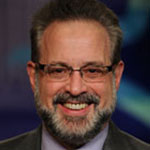U.S. Philanthropic Sector Aligning Giving with National HIV/AIDS Strategy and HIV Care Continuum
Topics
 Dr. Ronald Valdiserri
Dr. Ronald Valdiserri
 A report released last month by Funders Concerned About AIDSExit Disclaimer (FCAA) documented significant changes in the philanthropic sector’s giving priorities that will be helpful in achieving the goals of the National HIV/AIDS Strategy (NHAS). Specifically, the report reveals that most leading domestic AIDS funders are now requiring that funded programs align with the NHAS and that funders are beginning to monitor how their grants address gaps along the HIV care continuum and treatment cascade.
A report released last month by Funders Concerned About AIDSExit Disclaimer (FCAA) documented significant changes in the philanthropic sector’s giving priorities that will be helpful in achieving the goals of the National HIV/AIDS Strategy (NHAS). Specifically, the report reveals that most leading domestic AIDS funders are now requiring that funded programs align with the NHAS and that funders are beginning to monitor how their grants address gaps along the HIV care continuum and treatment cascade.
The report—Global Philanthropic Support to Address HIV/AIDS in 2012Exit Disclaimer—found that funding to address HIV/AIDS from private philanthropic institutions around the world totaled $636 million in 2012, remaining essentially flat (a less than 1% increase) as compared to 2011. Of that total, $100 million in funding from U.S.-based funders was directed toward efforts to address the domestic epidemic.
The FCAA report highlighted the work of 15 domestic-focused funders who provided examples of how their grantmaking strategies are now aligned with the NHAS. Among the NHAS-related trends reported by domestic funders were:
- Implementing new guidelines to track or prioritize the relationship of grantee programming to the NHAS
- Prioritizing programs that focus on routine HIV testing and early treatment initiation
- Supporting advocacy efforts to monitor and influence the NHAS, as well as policy work to ensure optimal funding for its full implementation
- Seeking innovative access-to-care initiatives, particularly those that feature cross-issue/sector collaborations (broader health, housing, mental health, LGBTQ services, etc).
![]() Other trends highlighted in the report indicate further alignment with principles of the NHAS. For example, consistent with the Strategy’s call to concentrate resources and efforts among populations hardest hit by HIV, MSM were identified as among the top three population groups served by funded activities by 64 percent of U.S.-based funders supporting domestic projects. This is a significant increase from 45 percent as reported in 2011, making MSM the top target population among these donor’s projects. (According to CDC data, MSM represent just 2 percent of the U.S. population, but account for 63 percent of all new HIV infections in the United States each year, as well as more than half of people living with HIV (52 percent)).Furthermore, the report reveals that in 2012, for the first time, HIV treatment projects received a greater share ($23M) of U.S. domestic philanthropic funding than HIV prevention projects ($21M).
Other trends highlighted in the report indicate further alignment with principles of the NHAS. For example, consistent with the Strategy’s call to concentrate resources and efforts among populations hardest hit by HIV, MSM were identified as among the top three population groups served by funded activities by 64 percent of U.S.-based funders supporting domestic projects. This is a significant increase from 45 percent as reported in 2011, making MSM the top target population among these donor’s projects. (According to CDC data, MSM represent just 2 percent of the U.S. population, but account for 63 percent of all new HIV infections in the United States each year, as well as more than half of people living with HIV (52 percent)).Furthermore, the report reveals that in 2012, for the first time, HIV treatment projects received a greater share ($23M) of U.S. domestic philanthropic funding than HIV prevention projects ($21M).
According to Mr. John Barnes, FCAA’s Executive Director, 12 of the private funders queried by FCAA also indicated that at least some of their organization’s projects addressed the HIV care continuum or treatment cascade either here in the U.S. or in other countries. For example, some funders prioritized programs focusing on hard-to-reach populations such as people living with HIV in the U.S. South, incarcerated persons, homeless persons, or women. Others reported supporting HIV testing/screening initiatives that include linkage to care plans or funding research and convenings to link international and domestic scientists and pubic health practitioners around best practices in retaining people in care. To illustrate this trend, the report highlighted examples from the M•A•C AIDS FundExit Disclaimer – the top philanthropic funder of the U.S. domestic epidemic –and the Fund’s intention to allocate additional funding in testing, linkage and retention efforts to help impact the treatment cascade.
“We hope by highlighting philanthropic efforts to address the NHAS and the treatment cascade we can help to mobilize and encourage coordinated and impactful funding focused on ensuring people living with HIV/AIDS are receiving the care they need,” said Barnes.
The report was developed with support from UNAIDS to inform stakeholders about the overall distribution and trends of global AIDS philanthropy. It was developed based on surveys completed by funders, with supplemental review of grants databases and funders’ grants lists. Data was obtained from nearly 300 organizations that FCAA believes to represent the substantial majority of global private HIV/AIDS philanthropy.